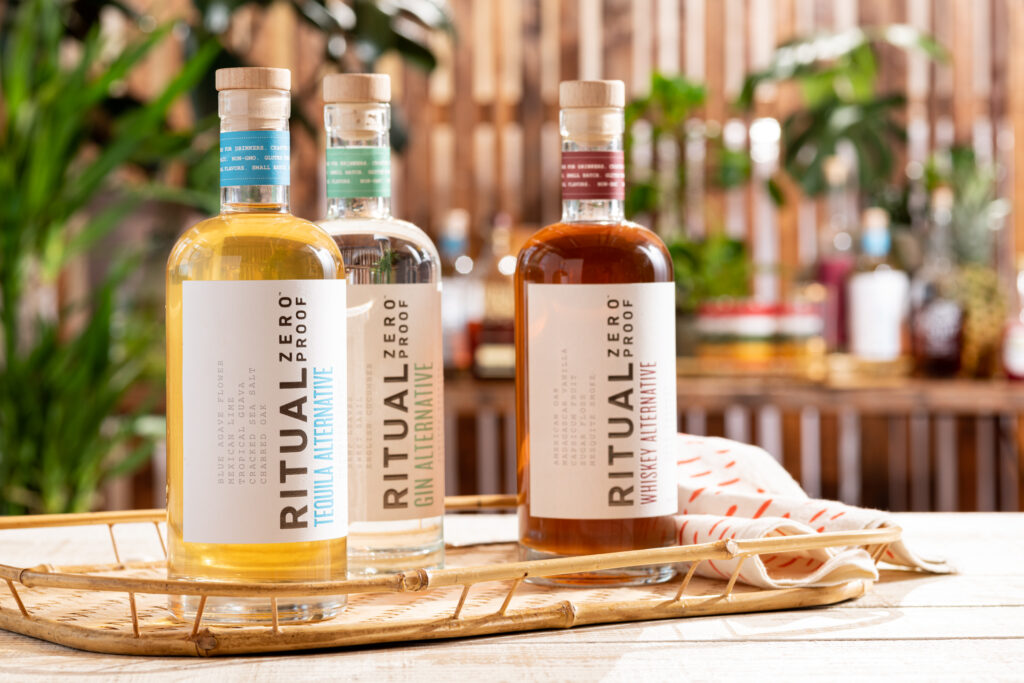By: Tracey L. Kelley
No producer wants to feel like their business is simply dictated by trends and not backed by individual vision and a solid plan. However, if 2020 taught us anything, it’s to be strategic, targeted and, most of all, flexible.
To understand what consumers want in 2021 and beyond, Beverage Master Magazine gathered some trend data and talked with Holly McHugh, marketing associate for Imbibe, a beverage development company focused on the formulation, customization and commercialization of cutting-edge beverage products that provide a “bolt-on R&D function” for companies without R&D or that need to expand in this area.
So—What’s New?
Taking stock of the past year and establishing aspects of revision is still a personal and professional journey. Still, maybe some of these indicators will resonate as either extensions of current practices or sparks of innovation.
People are Eager for To-go and Online Options
“The pandemic changed the way we shop, socialize, entertain and more,” McHugh said. “This created a need for CPG (consumer packaged goods) brands to offer products that provide an escape from the mundane but can be enjoyed at home.”
In December 2020, Forbes reported that “total eCommerce penetration experienced 10 years of growth March through May 2020.” It cited research from IWSR that stressed “online sales of alcohol in the U.S. alone are expected to grow by more than 80%” in 2021. The IWSR analysis indicated that “beverage alcohol eCommerce value grew by 42% in 2020,” and the forecast is that the U.S. will overtake China “as the world’s largest beverage alcohol e-Commerce market by the end of 2021.”
Quite simply, customers are fond of the convenience and expanse of options online ordering provides. In major and secondary market areas, consumers use platforms like Drizly to browse various selections and receive their purchases within 60 minutes. Many local producers also have access to DoorDash and other delivery services, regulations permitting. “Ghost bars” — extensions of virtual or cloud bars or restaurants often accessed only through third-party delivery services — also saw an increase in consumer interest as producers found new ways to lower overhead but expand product offerings and brand awareness.
Do-it-yourself kits, mixology classes, premium bar selections, unusual or over-the-top experimental selections and other experienced-based offerings continue to drive consumer interest in 2021. They also still desire personal connections with makers.
Non-standard Products Continue to Rise
Hard seltzer, cider, tea, kombucha and beer tap into consumers’ desire to balance healthy libations with beverage-driven exploration.
For example, pandemic purchases of hard seltzer, in particular, rose significantly in 2020, moving beyond previous limitations of seasonality, and there’s no stopping point yet. Nielsen reported that “Hard seltzer-correlated ready-to-drink cocktails drove $120 million in U.S. off-premise sales in the 52-week period ending June 2020, while growing at a 127% rate compared with the previous year.” That growth, Nielsen states, “opened the doors to an even broader array of new and bolder flavor options accompanying the base liquid, and it’s allowing manufacturers to expand the limits of what ‘hard seltzer’ means.”
Zero-proof spirits, especially those enhanced with adaptogens – herbal substances that promote wellness – botanicals and CBD also have growth potential.
As regulations shift, CBD- and even THC-infused products are positioned for a meteoric rise, according to a 2020 report by Grant View Research. “The global cannabis beverages market size is expected to reach USD 2.8 Billion by 2025 at a CAGR (compounded annual growth rate) of 17.8 percent.” While some consumers might opt for THC’s “therapeutic effects along with the euphoria it provides,” Grant View Research indicated, people consider CBD products differently.
“Lack of psychoactive effect in the CBD drinks is widening its scope for usage of the drinks in medical purposes. Many consumers are considering CBD drinks as a wellness and anti-inflammatory products, such as kombucha, a probiotic drink. This drink can potentially be used for treating chronic pain, anxiety, substance use disorders and central nervous system diseases. These factors are expected to boost the adoption of the product, resulting in the growth of the segment,” the report outlined.
Health is Front and Center
“Since the onset of the pandemic, improving physical and mental health has become a top priority for consumers,” McHugh said. Imbibe’s trendspotting indicated a sharp uptick in non-alcoholic wellness beverages and other forms of “permissible indulgence.” While this doesn’t seem to align with alcohol initially, it presents opportunities to consider communications and branding that acknowledge aspects of a healthy lifestyle.
Spirit-forward classics, which celebrated resurgence in 2020, aren’t slowing down in the new year and might provide another way to acknowledge the balance of responsible consumption that focuses on taste and experience.
Combating stress with beverages, otherwise known as mood boosters, that allow for clarity, relaxation and sleep is another trend for 2021, similarly to non-traditional offerings.
There’s a Greater Awareness of Ethical Practices and Cultural Appropriation
In addition to a greater interest in immunity and mood-boosting beverages, McHugh said there’s an increased demand for global products and flavors — with a caveat.
While culinary tourism is at a high, panelists at Bar Convent Brooklyn last fall stressed that consumers would continue to share dollars and social media influence with businesses that are more progressive when addressing workplace inequalities, sexism, racism and other societal concerns. They want inclusion and diversity, but from the originators. For example, tiki bars are replaced with nautical or tropical themes; an introduction to popular new tequila includes cultural history from someone in the Latinx community; and a closer examination of whether the producers’ table includes people of color and women, especially when it involves other rising spirit trends such as sake, soju, South American spirits and Japanese whiskey.
Value and Safety Still Prevail
While this really isn’t a surprise, it’s simply a reminder that we can’t move into what was once normal just yet.
“Economic uncertainty created demand for value, which we anticipate will be evident through increased sales in multi-use and multi-pack products and private label innovation,” McHugh said. “Safety is something we always think about in the industry in the sense that we don’t want to sell a product that could be dangerous to the consumer, but concern about safety has been heightened by the pandemic. Consumers are purchasing groceries online now more than ever, paying closer attention to product packaging and checking what safety precautions food service establishments are taking before eating out or ordering in.”







